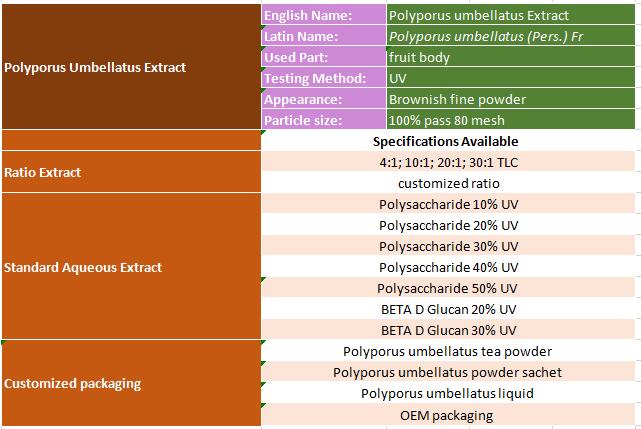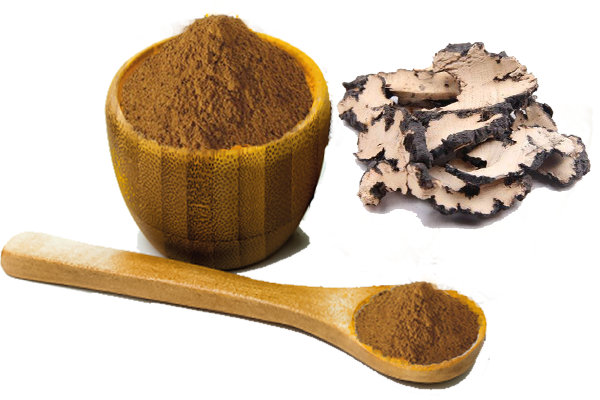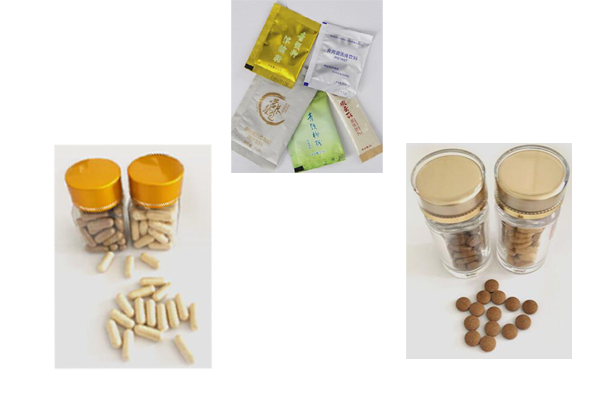

polyporus umbellatus extract specification
History of Polyporus Umbellatus
Polyporus Umbellatus is a rare species of mushroom, found to grow primarily on the roots of oak trees or withered beech or maple trees. Its fruits grow from the undergroud fungus , near the bases and roots of hardwoods across northern North America. It is apparently fairly rare. and is encountered far less frequently than the somewhat similar Grifola frondosa. Tht fruiting body consists of many small, smoky brown ,roundish caps ( as opposed to the larger, fan-shaped and irregular caps of Grifola frondosa);the undersurfaces are white ;and the individual branches are fused together into one solid structure. Its diuretic effects have been recognized in both traditional and non-traditional medicine; and it has been commonly used in Chinese medicine for centuries. It is one of the more popular mushrooms in TCM.

polyporus umbellatus extract planting base 02
Specifications of Polyporus Umbellatus Extract specification
Studies indicate that Polyporus umbellatus may be beneficial in treating such conditions as Hepatitis B and Chlamydia. Its anti-tumor effects have also been studied, as has its ability to aid cancer patients. Notably, the Polyporus mushroom has been looked at as a possible aid in Cachexia, a condition common in cancer patients which is often characterized by significant weight loss, muscle atrophy, weakness and fatigue. Below are our Mainly supplied purity
Origin of Polyporus Umbellatus Mushroom — Wild & Cultivated !!!
Wild polyporus was borned in dense forest underground and there is no part as a symbol of the earth which is difficulty collection outside.Now we owned our GAP planted base in China for getting high quality polyporus regularly .

polyporus umbellatus extract planting base
The polyporus umbellatus growing as perfer slope cultivated land which is Fertile moist, rich in humus,good drainage. It will grow in temperature of 8~9℃ below the surface 5 cm and 15~20℃ is most suitable. The mycelium will stop growing when temperature in 25~30℃ and be into short-term dormant, or grow fruit body, through the bad environment and thrive in spore. Late early winter, the ground under 5 centimeters, temperature less than 8 ℃ and to enter into the winter hibernation.Year for4 ~ 6 months and 9 ~ 10 month grifola hyphae of active growth phase.
Polyporus Umbellatus Extract benifits
Polyporus umbellatus extract polysaccharide
Polyporus umbellatus extract polysaccharide is the soluble polysaccharide which is from Polyporus umbellatus extract. Its active portion is the glucan that is composed by the main chain connected with -(13) glucoside and the branch chain connected with -(16) glucoside. Polyporus umbellatus polysaccharide has the good effect to anti-tumor, prevent radiation, help to cure rheumatism, edema, lung or stomach cancer, etc.
In confirmation of its use in Traditional Chinese Medicine (TCM) for urogenital infections, one study showed Zhu Ling having an inhibitory effect on Chlamydia trachomatis.
Some of the most promising modern research on Zhu Ling has been on its effect against parasites, for the treatment of Hepatitis B, to boost the immune system, and for the treatment of certain cancers including liver cancer, bladder cancer and leukemia – in particular to help theimmune system rebound and to prevent the recurrence of cancer after chemotherapy and radiation. Two studies from and showed 68% and 50% reduction rates of cancer recurrence when Zhu Ling was administered after the conclusion of conventional cancer treatments.
Two parasites that have responded well to treatment with Zhu Ling extract are Plasmodium falciparum (malaria) and Brucella spp. (brucellosis). Lab exposure of the malaria parasite to Zhu Ling extract proved 100% effective. We don’t as of yet have any report from a study on live patients with malaria.
In the case of brucellosis, Zhu Ling extract helped reverse the suppression of the immune system, which is part of this debilitating disease.
Another use of Zhu Ling in Traditional Chinese Medicine is for the treatment of hepatitis B. Several studies have confirmed that Zhu Ling has an effect in the treatment of hepatitis B. However, Liu in 2001 concluded that the effect is not strong enough to be able to rely exclusively on Zhu Ling for the treatment of hepatitis B, although it can be used effectively in combination with other forms of treatment. Zhu Ling also demonstrates a protective effect in cases of toxic hepatitis. A recent study conducted in 2008 showed Zhu Ling extract exhibiting potent anti-inflammatory properties.
As a professinal fungus extract manufactrer, MIGU also can provide more organic fungus extract like reishi, cordyceps, chaga, shiitake, maitake and etc,
References :
References :
1.Fascinated by Fungi, Pat O’Reilly 2011
2.BMS List of English Names for Fungi
3.Dictionary of the Fungi; Paul M. Kirk, Paul F. Cannon, David W. Minter and J. A. Stalpers; CABI, 2008
4.Taxonomic history and synonym information on these pages is drawn from many sources but in particular from the British Mycological Society’s GB Checklist of Fungi and (for basidiomycetes) on Kew’s Checklist of the British & Irish Basidiomycota.
5.Kunca V., 2011: Ecology and incidence of Polyporus umbellatus in Slovakia. Czech Mycology 63(1): 39-53. [1]
6.Li X, Xu W, Chen J (2010). “Polysaccharide purified from Polyporus umbellatus (Per) Fr induces the activation and maturation of murine bone-derived dendritic cells via toll-like receptor 4.”. Cell Immunol 265 (1): 50–6.doi:10.1016/j.cellimm.2010.07.002. PMID 20673883.
7.Zhao YY, Chao X, Zhang Y, Lin RC, Sun WJ (2010). “Cytotoxic Steroids from Polyporus umbellatus.”. Planta Med 76 (15): 1755–8.doi:10.1055/s-0030-1249926. PMID 20458671.
8.Sun Y, Yasukawa K (2008). “New anti-inflammatory ergostane-type ecdysteroids from the sclerotium of Polyporus umbellatus.”.Bioorg Med Chem Lett 18 (11): 3417–20.doi:10.1016/j.bmcl.2008.04.008. PMID 18439824.
9. Zhou WW, Lin WH, Guo SX (2007). “Two new polyporusterones isolated from the sclerotia of Polyporus umbellatus.”. Chem Pharm Bull (Tokyo) 55 (8): 1148–50. doi:10.1248/cpb.55.1148.PMID 17666835.
10.You JS, Hau DM, Chen KT, Huang HF (1994). “Combined effects of chuling (Polyporus umbellatus) extract and mitomycin C on experimental liver cancer.”. Am J Chin Med 22 (1): 19–28.doi:10.1142/S0192415X94000048. PMID 8030616.
11. Ohsawa T, Yukawa M, Takao C, Murayama M, Bando H (1992). “Studies on constituents of fruit body of Polyporus umbellatus and their cytotoxic activity.”. Chem Pharm Bull (Tokyo) 40 (1): 143–7.doi:10.1248/cpb.40.143. PMID 1576664.
12.Zhang YH, Liu YL, Yan SC (1991). “[Effect of Polyporus umbellatus polysaccharide on function of macrophages in the peritoneal cavities of mice with liver lesions]”. Zhong Xi Yi Jie He Za Zhi 11(4): 225–6, 198. PMID 1773459.
13.Lin YF, Wu GL (1988). “[Protective effect of Polyporus umbellatus polysaccharide on toxic hepatitis in mice]”. Zhongguo Yao Li Xue Bao 9 (4): 345–8. PMID 3195347.










